Since mid-2021, I have been using a PC while switching between sitting and walking on a treadmill. After first 8 months, I lost 20 kg (44 lbs) and 25 cm (9.84 in) around my waist, my fitness also improved, and the comfort of using a PC is higher than when I used to stand in front of it. At the same time, I constantly feel like I haven’t done anything because walking slowly does not require much effort.
Update: I wrote this article after a year of using the treadmill in this way. After another year of daily use of the treadmill, there is nothing new to report – the treadmill works just as well as on the first day. I no longer have to worry about gaining weight. If I feel like eating an absurd amount of sweets one day, I know I can do it without any problem, and then I burn it off later. Through all of this, I also learned to count calories, stopped eating junk food, and lead a healthier lifestyle than before.
Table of contents
- Introduction
- Losing weight while using a computer
- Walking treadmill – how is it different from regular ones. Models etc.
- Settings of Xiaomi Walkingpad R1 Pro treadmill
- Disadvantages of using a computer in this way
- How much space is needed for it?
- At what height should the desk be placed?
- F.A.Q.
- How to count steps correctly on iPhone/Apple Watch
- Summary
How to lose weight “without doing anything”
Two years ago, I wrote an article about working while standing up, or rather using a computer while alternating between sitting and standing at an electrically adjustable desk. It worked so well for me that I would never go back to just sitting all the time. However, during the pandemic, I had less movement and more weight gain, so I decided to do something about it – preferably without putting in any effort or sacrificing any time for it. With this in mind, only one solution came to mind: walking while using the computer… Of course, at a pace that wouldn’t disrupt me in any way, not make me tired or uncomfortable. Now I can reveal that walking turned out to be even more comfortable than just standing at my raised desk and for over a year now, instead of alternating between sitting and standing when using the computer, it’s now been replaced with alternating between sitting and walking.
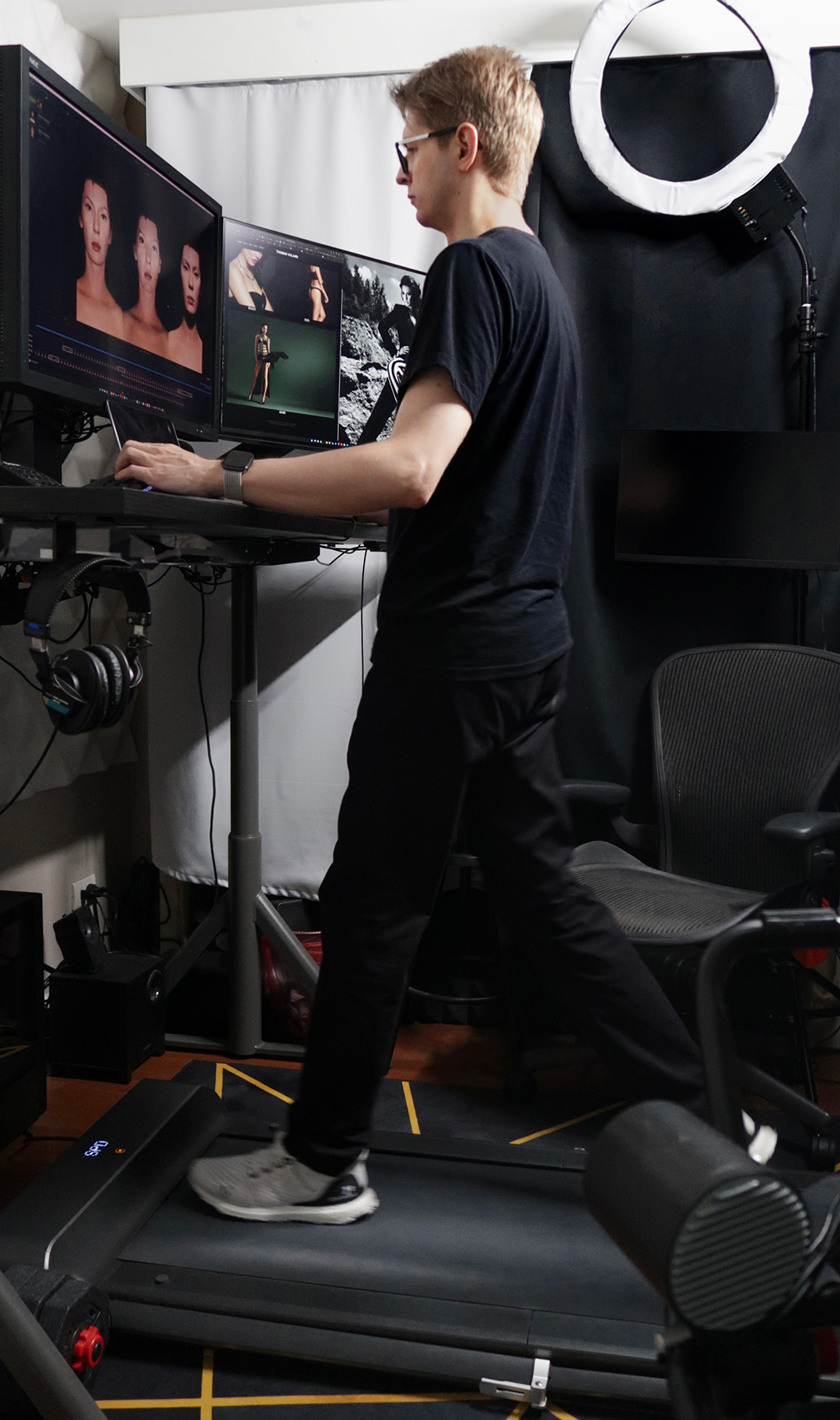
Even before the pandemic, I only walked just over 5000 steps a day, which is significantly less than what is necessary to be able to eat everything I wanted. It was also far from the result that would provide major health benefits, as it’s recommended to walk about 12,000 steps per day or more [1] (the research and analysis is linked at the end of this post). Walking is also one of the best ways to lose weight – it requires little effort, doesn’t raise cortisol levels like running does, and on leisurely walks our body doesn’t need to burn glycogen reserves. As a result, we don’t have to fight hunger because it doesn’t increase drastically like when burning off an equal number of calories by running. If you’re not an athlete level runner then walking burns more calories in an hour than strength workout. For people accustomed to strength training this might be obvious but it surprised me nonetheless. Of course walking won’t build muscles that require increased calorie intake later on. Unfortunately devices such as Apple Watch despite being very accurate in measuring heart rate show terrible inaccuracies estimating burned calories[3].
So walking has many benefits but also a significant drawback – it’s too time-consuming for life if you want excellent results compared with easier cardiovascular exercises like running. You have to sacrifice much more time than with running if you want remarkable results. I wouldn’t go for long walks every day under any circumstances even though they would lead excellent shape improvement and better health, because I simply have much more interesting things going on besides walking around all day long. However, since using my computer regularly keeps me on my feet, maybe I could walk instead of just standing.
Losing weight at the computer
So I bought a treadmill dedicated for walking, not running (although in my model I can also run, but up to 10 km/h max), to use it exclusively while using the computer. So most of the day I’m sitting, but when it’s time to change position to standing, I do it as before except instead of standing on the floor, I move my legs on the treadmill (and walking is actually more comfortable than just standing – after several minutes of standing still, I don’t feel like doing anything anymore and start fidgeting around and shifting weight from one leg to another etc., so after about 20 minutes I sit down. But I can walk for much longer without feeling any discomfort. I don’t run, just take a regular walk. Outside my normal speed is about 4.5-5 km/h (2.8-3.1 mph) whereas when working at the computer I walk slower – around 3.5-4 km/h (2.2-2.5 mph) which is very comfortable speed (and at first started with 2.5-3 km/h aka 1.6-1.9 mph).
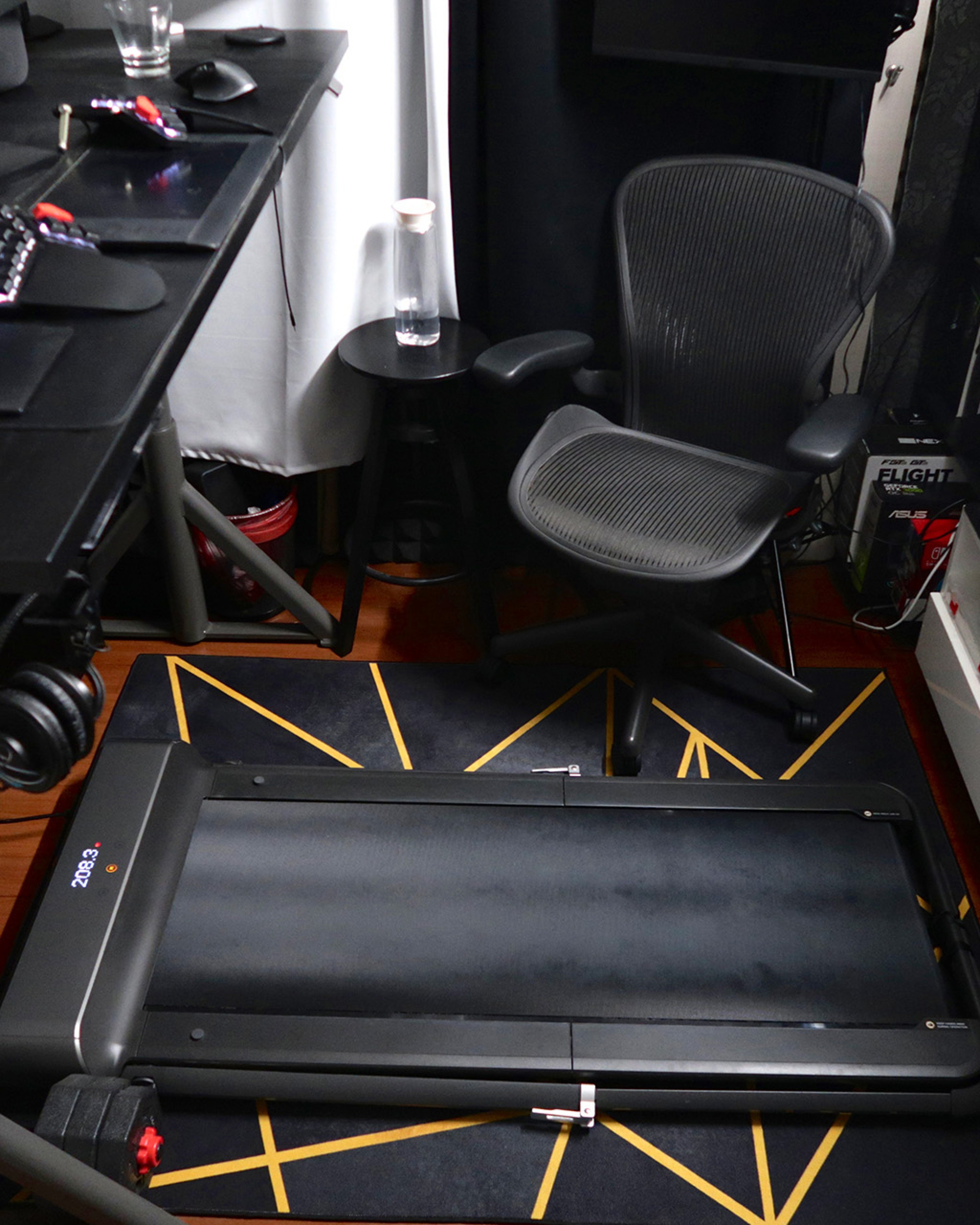
After 8 months of walking in front of the computer, I had 25 cm (9.84 in) less in waist circumference and significantly fewer kilograms, but I also ate less calorie-dense food.
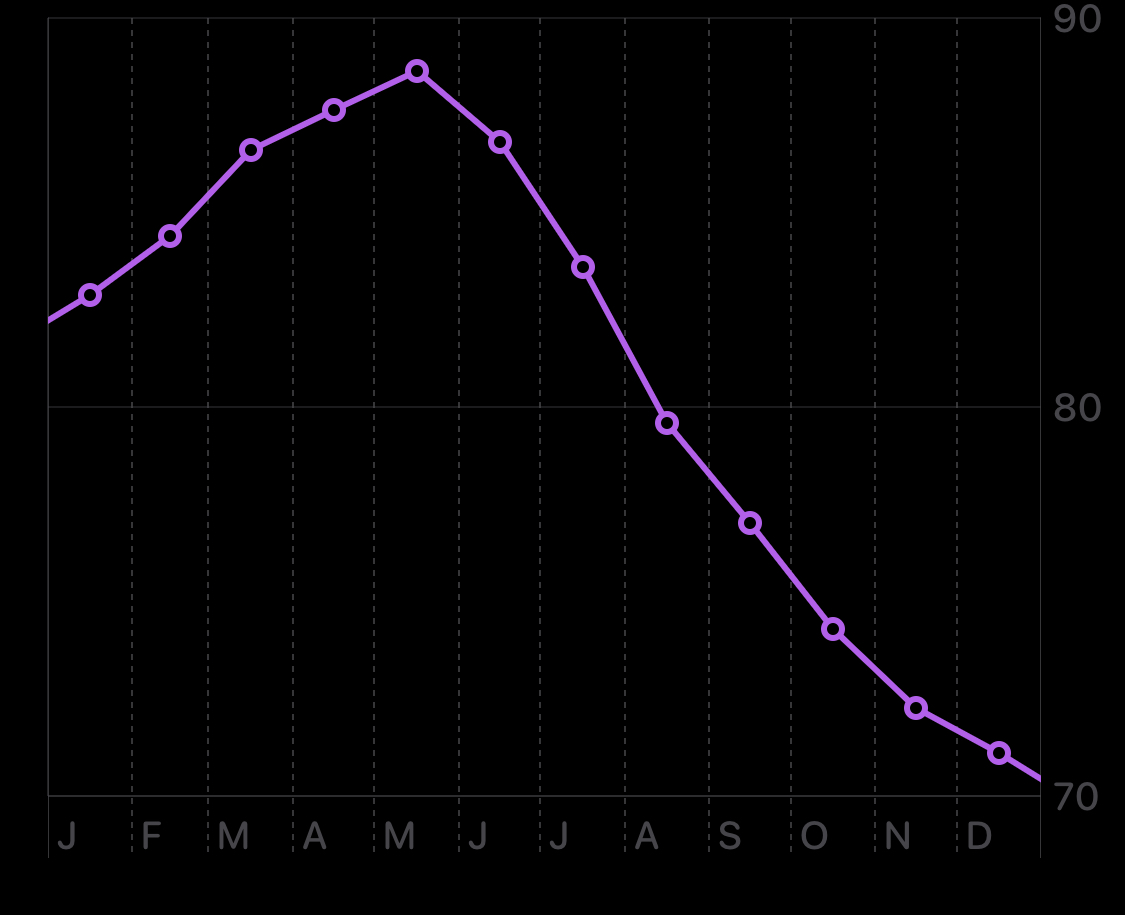
After losing weight, I started to limit the time spent on the treadmill, because without eating pizzas and sweets, it would be hard for me to eat enough to increase muscle mass instead of decreasing it (after losing weight I started improving my physique at the gym, so a slight surplus of calories would come in handy). It turned out that after being used to exercising regularly, reducing my daily steps from 25,000 to 15,000 was quite easy. However, later on limiting myself to 12,000 steps or less required changing my habits. In recent weeks I aimed for 7 km (4.4 miles) per day which translates roughly into 9,000 steps at a speed of 4km/h (2.5 mph) considering my height. Although this seems like a small achievement now (as I’m returning back to higher numbers). Without using the treadmill it would actually be one of the best averages throughout my life – usually such results were only achieved in individual months as neither my work nor hobbies require much walking.
During my weight loss phase I covered much greater distances: between 12-17.5 km ( 7.4-11 miles) per day. A habit that allowed me easily increasing the number of daily steps was giving up browsing social media and reading articles online right after waking up in bed and doing those activities on the computer; but doing them prior breakfast while still on the treadmill instead. I gave myself an hour to catch up on social media and other activities, reaching around 6k steps before starting a busy day. During the course of the day, I added an additional 12-19k steps through regular use while walking in my home office every single day.

However, I will add that the beginnings with the treadmill were a bit painful. I immediately started taking a lot of steps (but at a slower speed than now, so in kilometers, the numbers were not as high as after a few months). Unfortunately, for some reason, instead of wearing the most comfortable shoes I had, I took those that I didn’t use and assigned them only for walking on the treadmill. They were less comfortable than the ones I used outside, which, combined with the fact that my legs were not accustomed to such activity, gave me blisters and walking became painful. After a few days, I started using the same shoes I wore every day, and after a month, I bought ones that I only wear on the treadmill, and they are very comfortable for me.
In theory, running shoes should be replaced after about 500 km (310 mi). I didn’t run, so they should last longer. Currently, they have just under 5000 km (3100 mi), and I have the impression that their cushioning has decreased, but not enough to make walking uncomfortable (they still cushion much better than standard shoes). However, after 3000 km (1864 mi.), I was convinced that they were still like new (of course, I didn’t go to the store to verify this with a new pair, because it would probably have misled me and made me want to replace them). If I were doing 17 km (10.5 mi) per day again, I would change them for a new pair for maximum comfort, but at 7-12 km (4.3-7.4 mi), I don’t feel the need – strong cushioning just makes a difference to me mentally when I have already walked a lot that day, and around 10 km (6.2 mi) is now “just a little”.
Walking treadmills – how are they different from regular ones, models, etc.
Unlike regular treadmills, a walking treadmill is much lower, lighter, and quieter. When not in use, it folds in half, and some models can be stored vertically, so they take up very little space. The one I use is one of the larger ones, mainly intended for walking (although it has an option for not-too-fast running), and it still remains very compact:
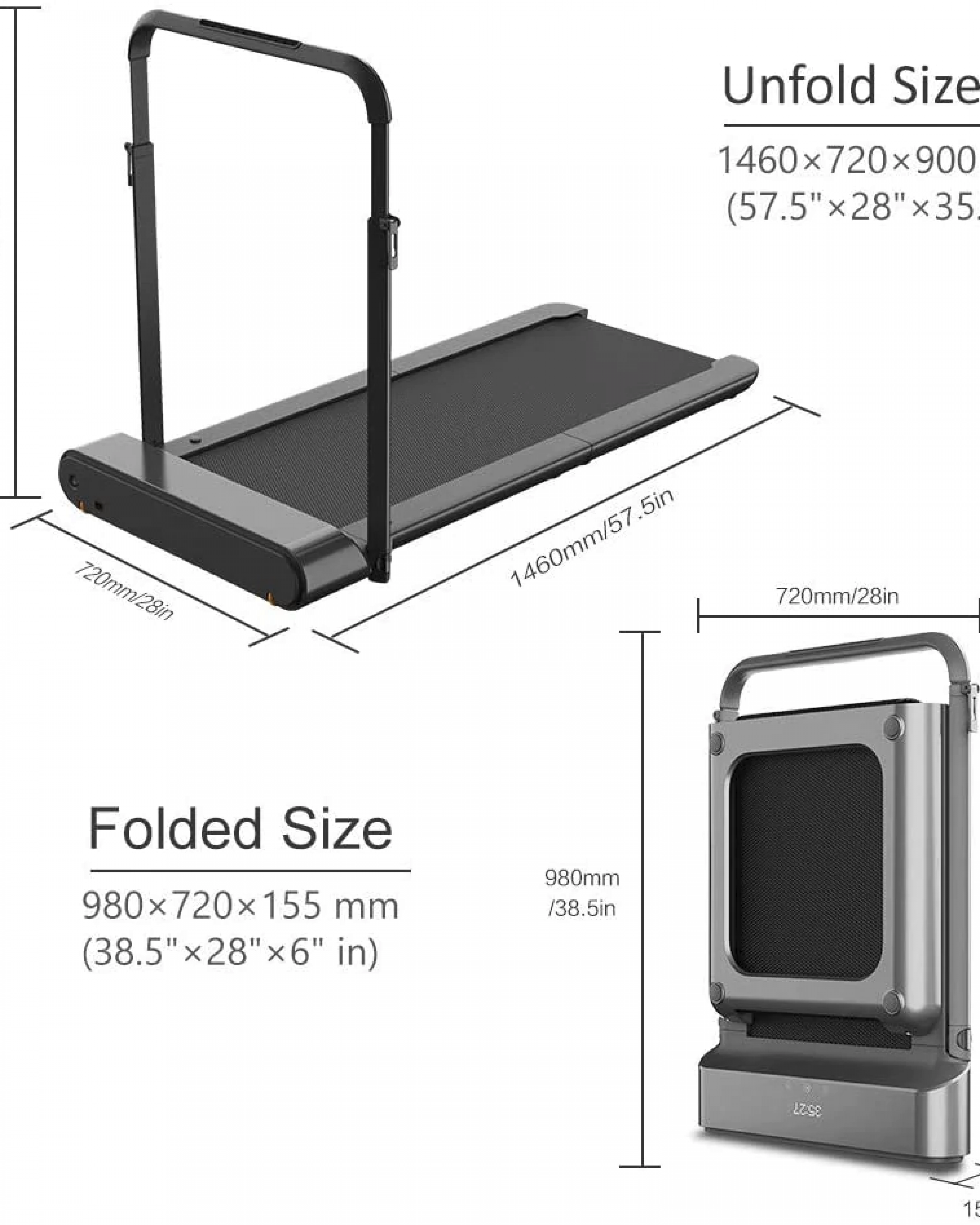
Walking models are smaller and many of them do not have a handle, or like mine – it doesn’t need to be pulled out while walking. This is a huge advantage because it would get in the way under the desk and extend the time needed to fold laundry.

However, when this handle is extended but still aligned with the track, it is very convenient for me to move treadmill around. So I don’t hide the handle when it is not in use, but I also don’t lift it up to walk. It simply remains in this form all the time:

In my home office, setting up the WalkingPad R1 Pro takes about 15 seconds, and if I’m slow, probably about 20 (that’s how long it took me right after purchasing it). By this, I mean the whole process – moving the office chair, moving the treadmill under the desk, which changes height in the meantime (I store the unused treadmill very close to the desk), tilting it from a vertical to a horizontal position, unfolding it, and plugging in the power cord. I have everything set up to make the whole process run as smoothly as possible.
There are different models of walking treadmills – I thought about buying one for a few months and chose the Xiaomi WalkingPad R1 Pro. In some countries call it just WalkingPad R1, without the Xiaomi label. I also saw it as Kingsmith R1 Pro. In reality, it is indeed Kingsmith TRR1F Pro, which Xiaomi rebranded as WalkingPad. And the “Pro” label doesn’t matter, because it only means that it is a version intended for sale outside of China.
I chose this model because it is easy to fold and store vertically, and I only came across positive reviews. However, I also thought a lot about other WalkingPad models from Xiaomi, mainly the A1 and A1 Pro , which have similar parameters but are narrower. However, I got the top model at the same price as the lower one, so I used it.
My friends, seeing the results of walking at the computer, also made purchases. In their case, they chose the WalkingPad R1 Pro (the same as mine), WalkingPad R2 (a heavier version of the R1, allowing running at 12 km/h instead of 10), Walkinkingpad S1 (significantly smaller, only for walking and horizontal storage, but something can be leaned against it vertically), HMS Loop 12 Multi (a treadmill with a maximum speed of 12 km/h, with a built-in small desk. Unfortunately, you need to put an additional stand on it because it is still low at maximum height). I also managed to convince many people who listened to me on the podcast or followed me on Twitter – they most often reported the same model as mine, the R1 Pro. However, I always advised against the WalkingPad C1 because it is a low-budget version with a brushed motor. As far as I know, the WalkingPad C2 is okay (essentially it is the same as the S1).
In the case of running treadmills, the average lifespan is 8 years. I have no idea what it will be for what I use for walking, but even if it were several times shorter, it would still be worth it. Actually, I can’t really imagine going back to my previous life – both in terms of lack of movement while standing at the computer and excess calories. However, assuming that I walk on a treadmill adapted to speeds much higher than what I use, it will last a long time. After the first 5000 km (3010 mi), I don’t see any signs of wear. According to the instructions, I put two drops of lubricant under the belt once every three months (it was included in the set), and when I walked a lot, I oiled it more often, and now I do it even several times a month because without it, the belt becomes electrified and transfers it to clothing (this is a feature of all treadmills, not just this one, I just didn’t know that lubricant helps with this at first). Additionally, I adjusted the belt about 3 times (as in every treadmill, there are screws at the back that are used when the belt moves all the way to the left or right, or when it is too loose and slips). It’s easy because it involves turning the screw 1/4 of a turn, that’s all, only the direction of rotation changes depending on the desired effect.
Xiaomi Walkingpad R1 Pro treadmill settings
The set includes a wireless remote, which is used to change the speed and mode of the device. So far, I have been using its factory battery replaced the battery after about 15 months. I keep remote controller on my desk all the time, but if someone insists on it, they can attach it to their wrist like in commercials.

I walk in manual mode, meaning I set a speed, for example, 4 km/h, and that speed is maintained, and the remote control adjusts it by 0.5 km/h ( 0.3 mi/h). In automatic mode, the speed is maintained when walking in the middle of the belt, and when you step forward, it accelerates, and when you walk at the end of the belt, it slows down. The auto mode didn’t work for me, and I didn’t even try to configure it because I want to walk at a constant speed anyway.
If you step off the belt, it stops after a while, and after 10 minutes, it turns off and resets the time/steps/calories counter, etc., which is displayed on the front display. After 2 hours of walking, the REST message appears, and you need to take a break for 30 or 60 minutes – I don’t remember because I always either stepped off or unplugged the power cord, which reset the break and allowed me to continue walking immediately. Since the break is enforced regardless of the speed used, I suspect that walking for more than 2 hours at a speed of 4 km/h does not risk damaging the equipment, but I’m not sure, so don’t follow my example.
Disadvantages of using a computer in this way
A few years ago, I had doubts about whether it would be comfortable to work standing up (without walking), but they mainly concerned using a graphics tablet. It turned out that working standing up is just as comfortable as sitting down. Working while walking is not much different from standing still – I write at the same speed, and when cutting timelines, I have no problem aiming precisely at the selected spot. Actually, everything is just as comfortable standing up and sitting down, except for one thing… Precisely operating a graphics tablet, for example, drawing eyelashes to the model, is impossible for me at the speeds I like. Just at the moment when I take a step, my hand makes a slight movement, which in any other situation doesn’t change anything, but when drawing a straight line at that moment, it would have a kink at the step. I only walk part of the day, so I handle all these things while sitting.
Apart from that, I would have to get used to playing games while walking, because when I move the character sideways and at the same time move my legs forward, it feels weird. But considering that in VR, I got used to running on walls and shooting while doing somersaults, I would also get used to playing while walking, I just didn’t have the opportunity. For the last year, I almost didn’t play FPS or TPP games on a monitor, and I didn’t have to get used to any other games at all – I played Diablo 2 Resurrected, Divinity 2, Baba is You, etc. perfectly fine on the treadmill.
How much space is needed
My treadmill sticks out 110 cm from the desk, towards the closet behind me. Additionally, I have a 5 cm gap between the closet and the treadmill, so there is 115 cm of space from the edge of the desk to the wall. The handle at the end of the treadmill takes up 4 cm of that space, but it can be moved (although it will extend the time it takes to set up). For over six months, I had furniture closer behind me, only 101 cm away instead of 110, but then a few times a month I would accidentally hit the cabinet with my shoe, which was right behind the treadmill, and I had to grab the handle from the inside, putting the treadmill upright. Now with a few extra centimeters, I can grab it however I want and don’t kick anything, and there are usually many centimeters of the belt behind me when I take a step. Of course, you also need a place to put the chair you were sitting on.
As for storing the treadmill, you need almost no space at all. I already posted the dimensions of the folded R1 model, which is much larger than those that don’t allow running even at a speed of 10 km/h. However, if someone has limited space, they can choose a smaller model with a speed of up to 6 km/h and keep it on the side, under the desk. Even such a speed would be more than enough for me.
At what height should the desk be
The walking treadmill is much lower than a normal one, mine is about 7 cm (2.76″). I have the desk at a height of 124 cm (48.82″) in the correct position, which is sitting with the elbows bent at about 90 degrees and the top edge of the monitor at eye level. Of course, a different height will be needed depending on the size of the monitor, shoes and most importantly, the height of the user. For me, this is the case at a height of 187 cm (6.14 ft), shoes with a 3 cm (1.18″) sole, and an ergonomic keyboard (ZSA Moonlander) whose wrist support is 2-3 cm high. So currently, in the Idasen desk, I still have a few centimeters of clearance, but I have heard of people who, at a similar height, needed a higher desk.
The manufacturer advertises using this treadmill while using the computer, but they do it in such an idiotic way, that some regulations should prohibit it (in fact, one could say that occupational safety rules do). Let’s hope that no one takes inspiration from this to set up their own workstation:

Staring at the wall behind the monitor because the screen is so low that a hunchback would be guaranteed, The keyboard is so low that ergonomics are not considered and after the first day of using the computer in this way, I would probably return the treadmill and never want to hear about working standing up and walking again.
F.A.Q.
- Can you feel the bend in the middle of the treadmill while walking?
I don’t feel it at all when walking in Ultraboosts, but I checked without shoes and then I would be able to tell at what point my foot crosses the bend, but I would have to focus on it and it doesn’t bother me at all. I’ve heard that it depends on the model and the unit – in some, it’s more noticeable. One person reported to me that in their R1 Pro, the bend was evident, and the treadmill was returned for that reason. For others, as far as I know, everything was okay. - Does the noise bother you?
At 4 km/h (2.5 mi/h), the sound of the foot striking the treadmill is louder than the sound of the motor, so if the sound of walking around the apartment doesn’t bother you, then it probably won’t on the treadmill either. - Can you type on the keyboard this way?
My typing speed on and off the treadmill is identical. - Can you walk barefoot?
Yes, but I can’t imagine doing such long walks since walking is more comfortable in shoes.
How to properly count steps on iPhone/Apple Watch
In theory, you could turn on the KS Fit app every time, which synchronizes with the treadmill and sends data to the Health app on your iPhone. Unfortunately, Apple has poorly developed how to use different sources of data, so I consider this method useless. I only used the app to configure speed at which the treadmill usually turns on and set what data are displayed and update my weight from time to time.
I use an iPhone and an Apple Watch – as a computer user, my hands are mostly on my desk, so the watch cannot count steps correctly. That’s why I always have my phone in my pocket, and in Apple Health options under a list of step-counting devices I moved it to the very top (the watch was first by default). So in “Health” app go to “Steps”, scroll down and click on last option (“data sources”), then you will see what is shown below:
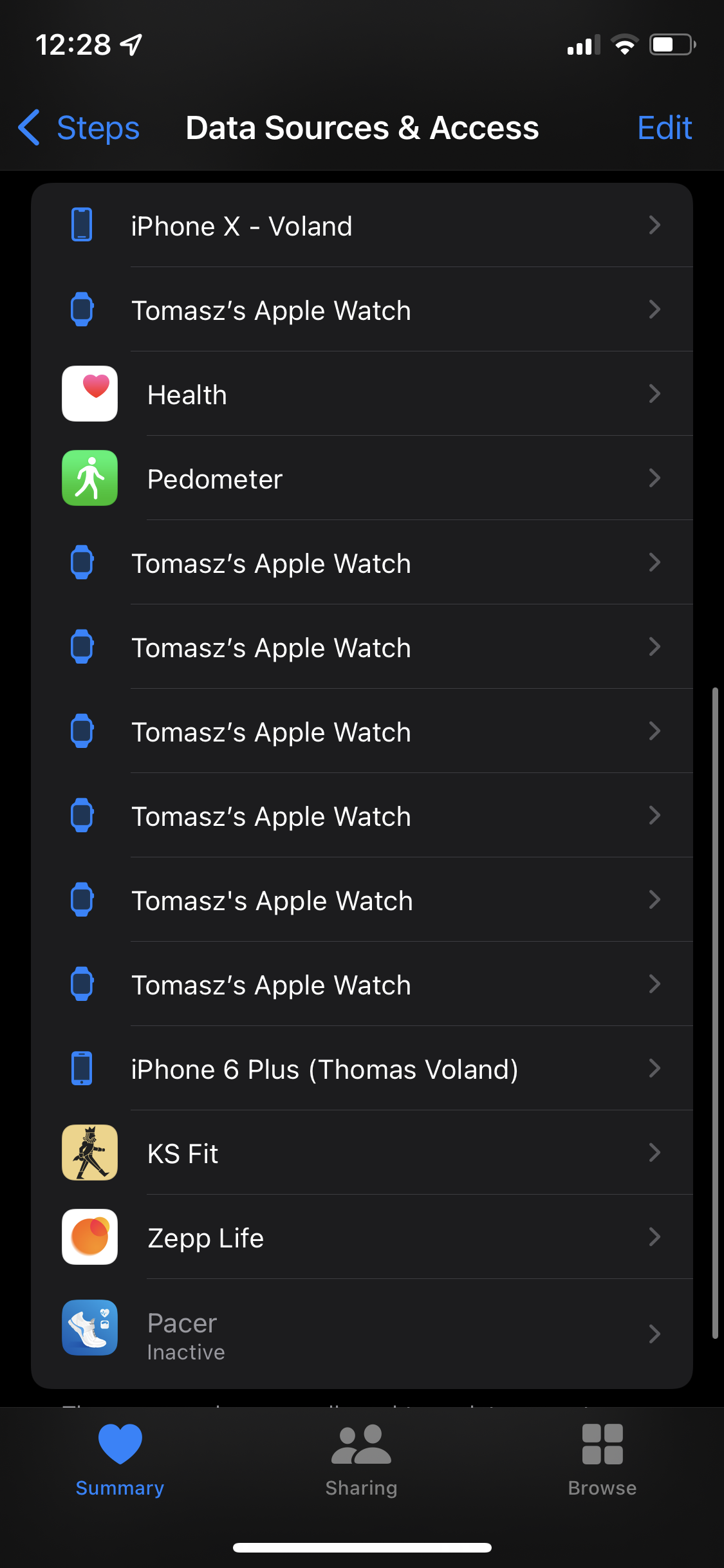
So, Apple is unable to correctly sum the steps from multiple devices – in the health app, only those set as primary on the list are displayed. Many apps retrieve data from Apple Health (e.g., MyFitnessPal) and use it to calculate calories, so it’s essential for the data to be accurate.
Additionally, when walking, I have an “Indoor walking” workout on my Apple Watch but that is not necessary. Unfortunately without this activity enabled, the Apple Fitness app would have completely different data because while Health may get phone data, Fitness always gets it from the watch. Even with this training turned on, steps are still far below actual counts but at least they are closer to reality.
Because I have a shortcut called “Time to walk” created on my iPhone, I can say that phrase to HomePod and it will start a workout on my Apple Watch and lower room temperature by 1°C. Eventually when I hook up my desk into HomeKit; then shortcuts shall also adjust its height position.
And speaking of step tracking – to know my true results, I use the free Pedometer++ app (I paid something, but it is unnecessary):

Besides being simply the coolest step tracker app that tracks how many days in a row we reach our goals (which is typically 8000 steps per day) and offers various additional challenges, the most significant advantage of Pedometer++ is that it works much better than Apple Health. Pedometer++ can analyze data from both your watch and phone and then select the most accurate results. So if I’m walking around my house without my phone in my pocket, instead of having no data at all, I will have the information from my watch and vice versa (user must enable “Merge Apple Watch Data” in this app’s settings).

Summary
I will always have a treadmill to walk on (hopefully the same one for the next 7-10 years), because it’s too big of a life improvement to give up. I have also watched TV shows on it, but I prefer lounging in my armchair in front of a big screen for that. However, when binge-watching an entire season, I’m happy to move onto the treadmill for 1-2 episodes halfway through.
Data
- Association of Daily Step Count and Step Intensity With Mortality Among US Adults
- Should You Be Taking 12,000 Steps a Day Instead of 10,000?
- Accuracy in Wrist-Worn, Sensor-Based Measurements of Heart Rate and Energy Expenditure in a Diverse Cohort
- Number of steps per day more important than step intensity
